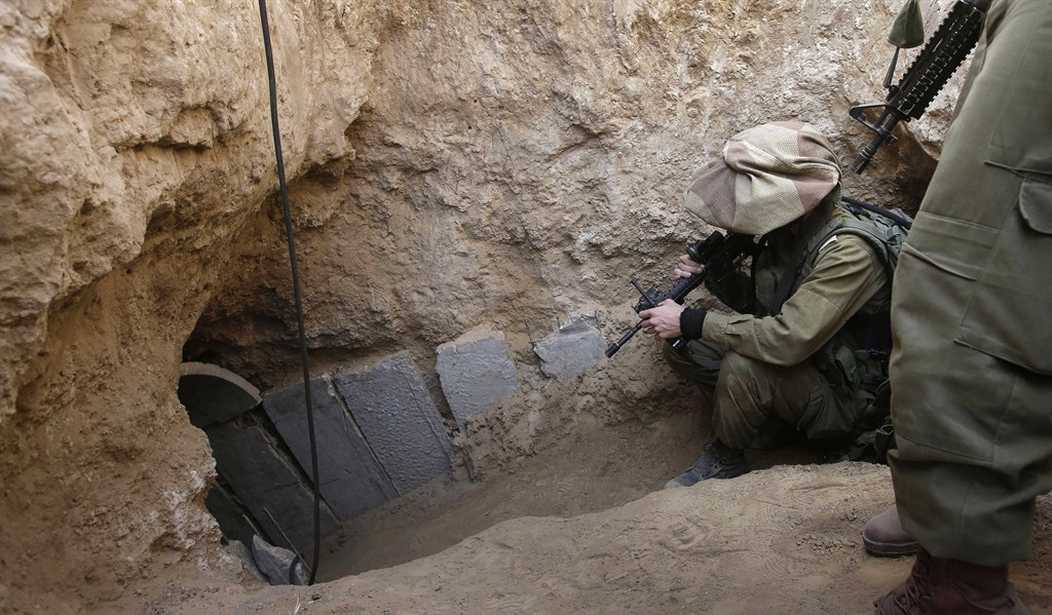The Journal of Strategic Security recently estimated that Hamas had prepared three lines of defense against any IDF incursion into Gaza. The first is immediately inside the border fence involving a network of mines, IEDs, ambush sites, and mortar targets. The second lies around major urban clusters with heavy mortars, antitank rockets, snipers, and suicide bombers. The third and final line of defense is the tunnel network inside the cities designed to allow movement of fighters and material and to surprise IDF forces, as well as the use of boobytraps and mines.
The IDF itself has evolved from emphasizing “open warfare” against national armies to urban warfare against nonstate actors. It was only after Operation Cast Lead in 2008, the first Gaza War, that the IDF doctrinally accepted that urban warfare would be the dominant form of future battle. The shift to urban warfare necessitated changes in IDF force structure and how it conducted operations. It had to adjust the proportion of infantry to armor and provide the troops with specialist equipment and training to fight in urban areas, in order to move through walls instead of through streets, and employ robots to scout or fight ahead, such as the Legion-X system. This was necessary to provide the high granularity of real-time intelligence coupled with very precise fires essential to conducting operations in a densely populated area.
The Gaza battle, should it occur, will not be the first major siege in recent history. That dubious honor belongs to the nine-month siege of Mosul against ISIS conducted by the army of Iraq and Kurdish Peshmerge between 2016 and 2017 involving a city even larger than Gaza, with a population of 3.7 million. It was not a freak event. “Coupling global urbanization with historical realities, U.S. doctrine envisions military operations in cities as an ‘inevitable norm.'”
What will taking Gaza look like? Experience seems to show that combined arms are still important. Armor is needed for fire overmatch, to carry supplies, and to protect personnel approach and exit from small arms. Urban combat is manpower intensive: a room requires a squad; a house a platoon; a small building a company to isolate, secure and take. An IDF combined arms unit will probably consist of infantry, tanks and combat engineers, plus supporting fires.
There is an information aspect to the battle also. The challenge lies in acquiring knowledge superiority over the battlefield. Modern battle management systems have (or should have) software interrupts that indicate friendly forces or verified civilian targets so there’s no Blue on Blue. Secured digital wireless communication systems, integrated with drones and unit radios, will be the invisible backbone of the battlefield. But it comes with a risk: each radio frequency node is a potential target and vulnerable to disruption.
There is a military discipline relevant to Gaza called subterranean war, which deals with deeply buried manmade or natural structures. It has existed from ancient times and long fell into disuse, but its ability to equalize the fight against a superior foe has made it popular across the region. “The Islamic State created tunnel systems underneath many Iraqi cities and villages. They were essential to its strategy, enabling them to move stealthily, strike quickly and escape capture. During the Battle of Mosul (2016-17), Iraqi troops and Kurdish Peshmerga forces found that the road into the city had been honeycombed with tunnels, many of them booby-trapped.”
The city itself also had an extensive network of tunnels and bunkers, to which fighters could retreat and from which they could send drones to collect information to identify the location of enemy troops, undetected by surveillance. The same was true of Fallujah. When under attack, ISIS fighters used the tunnels to hide from surveillance drones, artillery shells and US-led airstrikes.
The Syrians are dab hands at it now. “As foreign fighters poured into Syria over the course of the civil war, they brought with them the technologies and know-how to conduct tunnel warfare … Soldiers loyal to Bashar Assad can now dig high-quality tunnels at various depths and in various conditions.” Perhaps the most technically accomplished are Iran’s other proxy, Hezbollah, who can drill long tunnels through solid rock. They were so deep and hard to find that the IDF corps of engineers had to send its officers to special mining schools in Europe to figure them out. “The Israel Defense Forces (IDF) started searching for Hezbollah tunnels into Israel in 2013 after residents of northern Israel reported hearing sounds of digging, but failed to find anything. After the 2014 Gaza War … the IDF renewed its search for Hezbollah tunnels in northern Israel, and this time found indications that such tunnels existed. A laboratory made up of soldiers from technology and intelligence units was formed to investigate” until they were found.
A lot of the tunnels under Gaza were probably formed by connecting existing underground structures. Basements, utility tunnels, sewerage, drainage tunnels etc. are normal features of a modern city. The odds are that the IDF has been collecting building plans for Gaza for a long time. It won’t show Hamas’ additions, but it’s a start.
What’s different about modern subterranean war vs. ancient war is that the ancients sought caves in distant places, but modern MENA fighters add a layer of people over them. So added to the challenges of urban warfare are the problems of cave warfare. Here again the information challenge raises its head. In any likely combat in Gaza, the tunnels will contain a mix of occupants: Hamas, their families, wounded, hostages. There will be jails, hospitals, armories, storage, torture chambers and headquarters down there. Informationally, tunnel war is maximum entropy warfare. You don’t know where it goes; you don’t know what’s in there.
But if tunnel technology has advanced, so has counter tunnel technology. There’s no magic bullet, but some of the tools we’ll likely see (or won’t see) involve robotics. From open sources we know that some years ago DARPA was working on systems that can autonomously “rapidly map, navigate, search, and exploit complex underground environments such as human-made tunnel systems, urban underground, and natural cave networks. These difficult settings present challenges for military and civilian first responders”. This means that perhaps in Gaza, but certainly in the future, the tunnel rat will be an AI device. The winner in a recent DARPA cave-off was a legged robot.
It represents only the tip of the iceberg. The robots are now on the battlefied, first in the air and now under the ground. Like the drone revolution, our future is forever changed by our own innovation. Perhaps the worst result of the subterranean wall will have been to call forth a technology whose impact the world can scarcely foresee.








